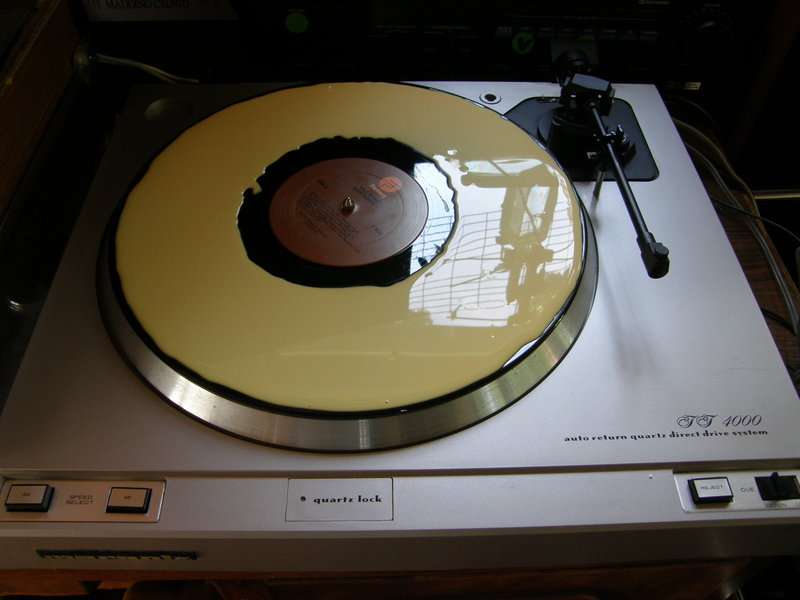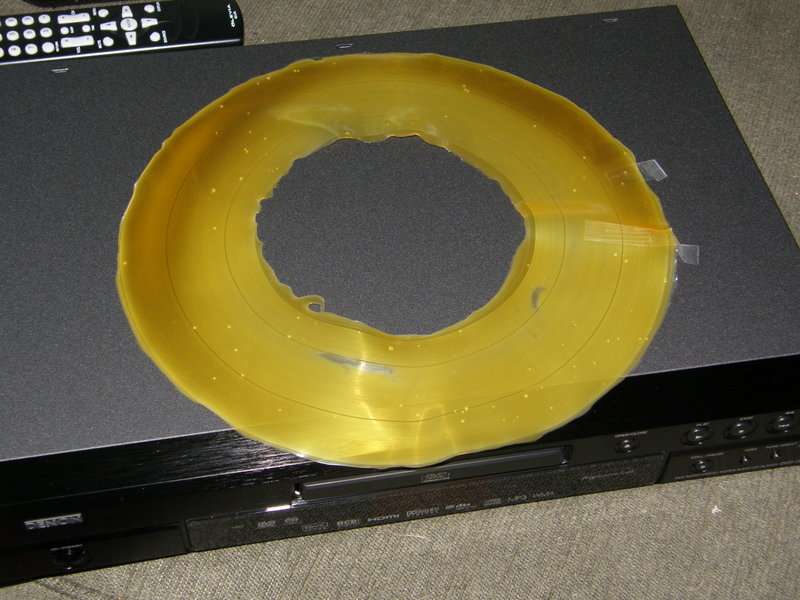
I buy a lot of used LPs, mostly from Half Price Books and The Salvation Army, but also from any "thrift store" I happen to be near. I pay anywhere from 50¢ to $5 for the discs (usually less than $5, and sometimes more for a rarity).
Needless to say, these things are often very dirty, even to the point of being unplayable due to mold, dirt, grease, and paper residue (I don't buy severely scratched LPs). A really good record cleaning machine costs between $500 and $1000. That's out of my price range.
So, I use cheaper (but effective) methods. These range from the quick (and dirty) to more time consuming methods.
For starters, I'll clean a new-to-me disc with my old Discwasher brush, using a homemade cleaning concoction involving lots of distilled water, some 91% IPA, and a drop of Dr. Bonner's unscented soap. This is an effective cleaning method for the least filthy discs.
Dirtier discs get the steam treatment, wherein I spray concentrated distilled-water steam onto a record, and wipe it dry with a micofibre cloth. This a scary method, as newer LPs ('70s and up) will buck and warp under the steam heat, but quickly return to normal. Scary indeed.
For the most serious cleanings, I use wood glue (I may steam it first). I spread the glue in a thin layer over the surface of the disc (Titebond II seems to work best), using an old credit card as the spreader. I then let the glue dry completely (no translucent areas), which takes 4 to 8 hours. I then use my thumbnail to lift a small area near the edge, and carefully peel the entire mask away.
It seems to work quite well. This methodology emanates from European record collectors (who can't be wrong... they're Euro!). Click on the title of this post for more info.

The peeled mask of Titebond II wood glue. If you try and play it on your turntable, all you hear is, "Paul is dead. Paul is dead."
No comments:
Post a Comment